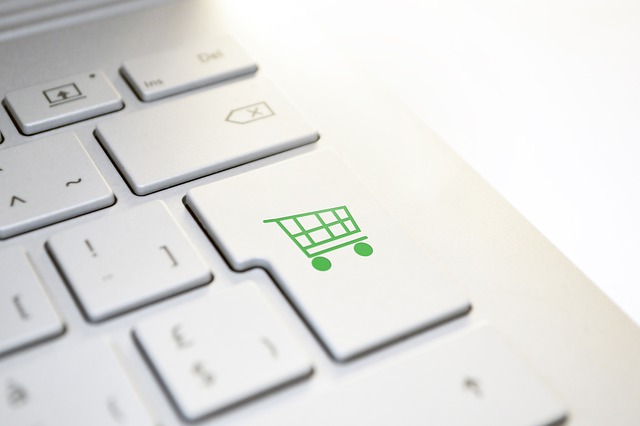Digital products have revolutionized the way we think about starting a profitable side hustle. In an age where the internet plays a pivotal role in our lives, leveraging digital products can significantly enhance your potential to generate income. So, what exactly are digital products? They encompass a wide range of items that can be sold or distributed online. Think e-books, courses, graphics, software, or even music. Therefore, let’s dive deeper into the multifaceted role that digital products can play in building a successful online business and how they can lead to a profitable side hustle.
Understanding Digital Products
To fully appreciate the role of digital products, we first must understand what they are and how they function in the market. Digital products exist in a non-tangible form, which means consumers cannot physically hold or touch them. This characteristic is a primary reason for their growing popularity. Buyers can access their purchased digital products instantly, eliminating the shipping wait time associated with physical goods. This immediacy not only enhances customer satisfaction but also increases sales potential as consumers often prefer quick access to their purchases.
Moreover, digital products often involve a one-time creation process. For instance, after you’ve created an e-book or an online course, you can sell it an unlimited number of times without incurring additional production costs. This scalability is incredibly appealing for anyone looking to create a profitable side hustle. Unlike physical products, there are no recurring manufacturing or inventory costs, making the potential for profit margins significantly higher.
Why Choose a Profitable Side Hustle with Digital Products?
The idea of having a profitable side hustle is enticing for many individuals. Whether you’re aiming to pay off debt, save for a vacation, or simply want extra income, starting an online business centered around digital products serves as an excellent option. The flexibility of digital products means you can create and sell them from virtually anywhere, giving you the freedom and autonomy to manage your time effectively. This freedom contributes to the appeal of pursuing an online business.
Furthermore, digital products allow you to tap into various niches and audiences. For instance, if you’re a fitness enthusiast, you might create a fitness guide or an online coaching program. If you’re adept at graphic design, consider selling design templates. The possibilities are vast! Consequently, choosing a niche that aligns with your passions can lead to a more fulfilling and enjoyable side hustle experience. This passion translates into authenticity, which resonates with your target audience, ultimately enhancing your brand’s credibility.
Getting Started: Identifying the Right Digital Product
Having identified the potential, the next step involves figuring out which digital product fits your skills and interests. The crucial process here is brainstorming ideas that align with your expertise. Ask yourself, what am I passionate about? What skills do I possess? What problems can I help solve? By narrowing down your niches based on these questions, you can begin to brainstorm viable digital products.
A significant advantage of digital products is that they’re often content-driven. This means you might consider creating a product that requires writing, designing, or developing. For example, if you’re knowledgeable in financial literacy, creating a course that educates individuals on budgeting and saving strategies could be your calling. Use online tools or social media platforms to conduct market research, assessing potential demand for your digital product before diving in deeply.
Creating Your Digital Product
Once you’ve settled on a digital product idea, the next step is to bring it to life. This stage can be both exciting and daunting, but don’t fret! Breaking the process down into manageable segments can aid in simplifying your journey. Focus on setting clear, actionable goals. For instance, if you’re writing an e-book, aim to draft a certain number of pages each day. Having a goal keeps you motivated and on track, essentially forming a roadmap leading to your ultimate objective.
In addition, consider investing some time in learning relevant skills or tools specific to your product. If you’re creating an online course, familiarize yourself with platforms like Teachable or Udemy. For e-books, tools like Canva or Scrivener can facilitate the design and writing processes. Utilize available resources, such as online tutorials, forums, or blogs dedicated to digital product creation; they can provide valuable insights and inspiration. Moreover, engaging with communities of fellow creators can enrich your experience, providing guidance and feedback along the way.
Marketing Your Digital Products
Creating an exceptional digital product represents only half the journey. The other crucial half involves effective marketing. How do people discover your digital product? This question invites various avenues to explore. Social media presents a powerful platform for amplifying your reach. By utilizing platforms like Instagram, Facebook, and Pinterest, you can tap into a ready-made audience interested in your niche.
Additionally, consider building a robust email list. Email marketing allows you to establish a direct line of communication with potential customers, so when you launch your digital product, you’re already equipped with an audience ready to promote your launch. Offer value upfront—perhaps through a freebie or a mini-course—encouraging subscribers to sign up while providing a taste of what your paid products entail.
Scaling Your Side Hustle
The beauty of a side hustle involving digital products lies in its scalability. As you gain traction in selling your digital product, you can explore additional avenues to expand and grow your business. Consider creating related products that complement your original offering, thus introducing upsell opportunities. For instance, if you launched an online course, adapt supplementary materials like workbooks, guides, or exclusive membership content to enhance the customer experience.
Moreover, aggregating your products into bundles can provide significant value to your customers while pooling your efforts into a concise marketing strategy. For example, bundling an e-book, planner, and worksheet that all revolve around a common theme allows customers to perceive the value readily. Additionally, partnerships with fellow creators can lead to cross-promotion opportunities, widening your audience base even further.
The Importance of Customer Feedback
Gaining insight into what your customers feel about your digital products is vital for growth. Customer feedback acts as a mirror reflecting what aspects of your product resonate well and which need refinement. Employ surveys, reviews, or direct communication channels to collect opinions and suggestions after the sale. This information is pure gold; it provides the foundation for making targeted improvements, allowing your products and your business to evolve organically based on the needs of your audience.
Furthermore, showcasing positive feedback and testimonials enhances your business credibility. Social proof still reigns supreme in decision-making processes when it comes to buying online. Display customer reviews prominently on your website or sales pages, as authentic testimonials resonate with potential buyers, encouraging them to trust your offerings and make purchases.
FAQs
What are digital products?
Digital products are non-tangible items sold online. They include e-books, online courses, software, graphics, and music, allowing customers to access them instantly after purchase.
How can I start a profitable side hustle using digital products?
First, identify your skills and passions, brainstorm potential product ideas, create your product, and finally, market it effectively through social media and email marketing.
What is the benefit of creating digital products over physical products?
Digital products have lower overhead costs, unlimited scalability, and immediate customer access. Unlike physical goods, there are no additional inventory or manufacturing costs.
How do I market my digital products?
Utilize social media platforms to reach your audience, build an email list for direct marketing, and consider content marketing strategies like blogging or creating promotional videos.
How can I scale my side hustle once it gains traction?
Consider creating complementary products, offering bundles, and forming partnerships with other creators for cross-promotion to broaden your reach and customer base.



